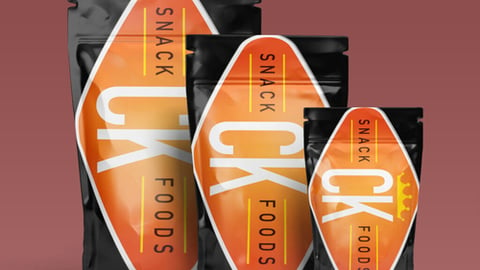Private Label Snacks Continue To Grow
To give shoppers lower-priced, quality alternatives, several retailers throughout 2024 have worked to expand their snack food assortment largely in response to continued price increases from national brands.
While experts say that consumers are conscious of price when looking for their favorite snacks, many are not just seeking out an item that carries the lowest price. Value is key for many shoppers, who are also open to trying new items and new flavor profiles as long as doing so doesn’t empty their wallets.
With this in mind, a growing number of retailers, from grocers to mass merchants and convenience stores, have expanded their own-brand assortments of salty and sweet snacks.
To get greater insight into the current state of the snack food marketplace, Store Brands spoke with Melissa Myres, insights director with Cincinnati-based 84.51˚, the data science arm of The Kroger Co., and Sally Lyons Wyatt, global EVP and chief advisor with Chicago-based consumer insights firm Circana.
STORE BRANDS: What trends are driving the snack food business?
MELISSA MYRES: In recent consumer research, we’re seeing some trends. The biggest is 66% of shoppers saying they are extremely concerned over inflation, the highest level we’ve seen since March of 2023. With that, 64% of shoppers have said they are looking for deals, sales, and coupons more often, as they are very concerned with value. Consumers still have their snacking occasions, but they are switching to lower-cost brands more often to satisfy their needs. They’re willing to trade down or into other options when it comes to snacking.
SALLY LYONS WYATT: Nostalgic flavors are a trend that I think is very interesting. It started in 2023, and I wasn’t sure it would continue, but it has. We’ve seen a lot of freeze-dried snacks, along with several products that include caffeine. We’ve also continued to see an uptick in products focused on well-being. And when we look at the consumer overall, they are trying to find the right balance between indulgence and better-for-you options.
SB: Under the large umbrella of snacking, are there certain products that are seeing the most interest from consumers?
MM: Looking at the past six months, there has been noteworthy growth in meat snacks, especially in private label. We have also seen growth in trail mix and potato chips.
SLW: Candy continues to be a popular snack, whether chocolate or non-chocolate. Also popular are potato chips, cookies and crackers, and then yogurt. There is also diversity in snacking and with what consumers see as snacks. Products such as tortilla chips, frozen novelties, dried meat, frozen appetizers, and snack rolls are also popular. You’ve got products that are either shelf-stable, sweet, or frozen. That’s a very diverse group.
SB: What impact is pricing having on the buying decisions of consumers?
MM: People are noticing the price increases and snacks and candy are among the categories where the higher prices are most noticeable. As a result, 43% of consumers are willing to switch to lower-cost brands within these categories. People still have their snacking occasions, whether they are working from home or watching a sporting event. With price the No. 1 thing they’re thinking about when shopping, consumers are also looking for options that differ from what they have been buying and are also looking for products offering a better value.
SLW: When looking at the price piece of this, we are still, on average, roughly 30% higher than in 2019 within food and beverage, and the story is much the same with snacking. But when you look at the end of 2023 into the beginning of 2024, the price increases of what we were seeing at the end of 2022 into 2023 are nowhere near the same. So we have slowed the price increase, month over month. There is also a variety of pricing when it comes to snacks, because of the variety of pack sizes offered. Some consumers will buy bigger pack sizes or multipacks to save money long-term, while others are looking for single-serve sizes. Snacking does a nice job of giving consumers a variety of prices to meet their needs.
SB: What role is health or healthy snacks having in the segment?
MM: Most shoppers are claiming they care about their health when it comes to snacking. However, on the flip side, our research shows that 28% of shoppers claim they don’t look at the ingredients list when they’re buying snacks. We also have 75% of shoppers who tell us that taste and flavor are the most important factors when they choose a snack, and only 29% say they are looking for some benefit such as high protein or low sugar. While taste still reigns supreme, it will be interesting to see how and if that number fluctuates over time.
SLW: The slowdown we’ve seen in coffee has had an impact on snacks. With people cutting back on their midday caffeine fix, consumers are looking for snacks that offer another source of energy during the day. Products with protein also play into this need for energy. So I’m not sure consumers are looking toward these products because they are healthier options; rather, they are turning to these products based on a need.
SB: Is there any notable difference demographically when it comes to the type of snacks consumers are buying?
MM: Our research does not indicate any major difference among the age groups when it comes to buying snacks. The one place there is some difference is within snacking occasions. Three-quarters of consumers aged 35 to 54 say they’re snacking multiple times a day. Only 56% of consumers 18 to 34 are snacking multiple times a day.
SLW: When it comes to the generational aspect of snacking, it’s not just the fact that consumers are snacking, but it’s the differences between each of the generations. It’s important to cater to each of the age groups with a personalized message. The type of product that may be interesting to someone in Gen X may not be of interest to someone in Gen Z. Being able to personalize or customize messaging by cohort group, whatever that group is, is one thing that retailers and manufacturers need to do their best to embrace. That will help overall traffic penetration and sales.





